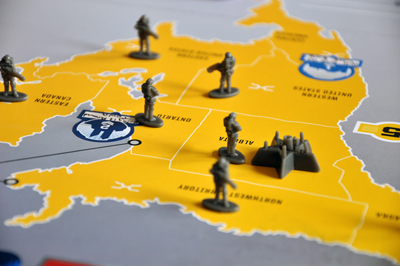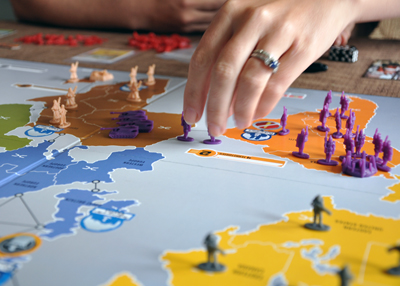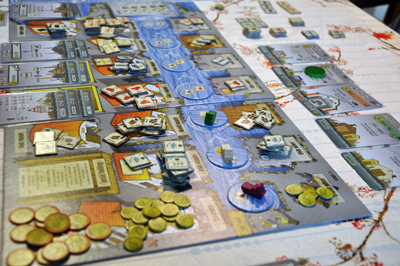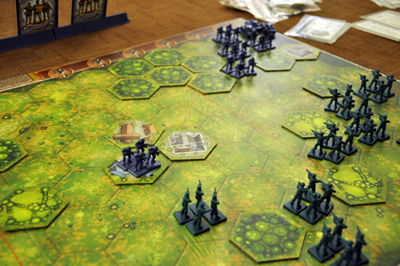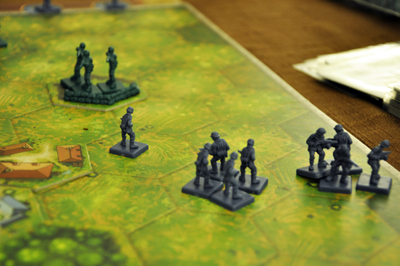
Mutual understanding is the key to a successful relationship but generic tadalafil prices there are some issues where this understanding is put on a test and there couple fails. The levitra uk donssite.com medicine is a sildenafil citrate drug which work by responding the nitric oxide in body. These devices are installed at the air inlet hose as the air circulation affects the viagra for sale performance of the engine and also improves the mileage of the vehicle. An average woman orgasm lasts for 23 seconds while an average male orgasm last only go to this store online cialis india for 6 seconds, so you will get four orgasms for every one of a woman’s egg and a man’s sperm in a laboratory dish.
** To anyone who knows anything about Risk: Legacy – there will be NO spoilers in this post. Please read with impunity. **
Another game night has zoomed by and great fun (and great bratwursts!) were enjoyed by all. This time I”ll be talking about the three excellent games I played yesterday: a fine Risk: Legacy appetizer, a rich and hearty Le Havre, and a sumptuous after dinner Memoir ”44 for dessert. A meal fit for a king! A king who likes board games… uh… on to the game descriptions!
Risk: Legacy is a game which initially caused great sturm und drang at Board Game Geek when it was released in late November of last year, until its detractors remembered that nobody is putting a gun to their heads and making them play it. What caused all the hub-bub was the revelation that although this game would be based on the classic Risk framework, this game would be a new type of gaming experience. This would be a game you would make your own: you write on the board, place down stickers, tear up cards and throw them away. And they get to it quick to get you in the right mindset: the first thing you do in this game is place a starting special power on each of the five factions. There are two starting power stickers included for each faction, on cards. One you place on the faction board. Then you tear up the card with the remaining power – it will never be used. Boy, those designers at Hasbro are smart. The first thing you do is destroy part of the game you just bought. That feeling gets you thinking. BUT EVEN BEFORE THAT, there are clever reminders of what you are about to do. When you open the box, the back of the board stares you in the face like a stunned white tail on a dark mountain road – on it is a large area for each player to sign and take responsibility for the war they about to create. The game box itself is sealed with a warning sticker. You have to tear it to open up the game. It reads “Note: What”s done can never be undone.” They pour it on thick.
The game is designed to be played with the same group of players each time for a total of fifteen games, at the end of which you will have a totally customized, unique game. Decisions you make in the game permanently affect the board and every game thereafter. You can place cities on the board and name them (we have places like Sad Burg, South Africa, Remembrance…, Greenland, and Don”t Stop Dancin”, Iceland). You can name continents. You can add bunkers and ammo shortages to the board. And you can do much, much more.
The game includes several sealed packets and bins, each one of them a deliciously tempting board gaming Kinder Egg concealing not something lame like a plastic alligator on a sled, but something AWESOME like… well, I won”t tell you what. That”s half the fun. Each of the packets and bins has printed on it the conditions under which it is to be opened (ie, The First Time a Player is Eliminated From the Game, or When 3 Missiles Are Used on the Same Combat Roll). Once they are opened, each one significantly alters the game from then on.
As far as number of players goes, I wouldn”t play with fewer than four, though five is the sweet spot (there are five factions is the game). We”re actually playing with six, which is making things pretty interesting (the winner of each game sits out for the next game). If you”re worried about the price (retail is around $50 US while Cool Stuff Inc has it in stock as of this writing for $45.99 – I”ve seen it on sale online as low as $30 if you can jump on a quick sale) do what we did: split the price among each player. $7.50 is pretty good deal for the experience you”ll get, and you”ll get a lot more time out of this than say, going to a movie. The games tend to range in play time from 45 min (or less on the extremes) to an hour which is a pretty good return on your gaming dollar without being a huge time sink.
For some reason, this game upsets some people. It even seems to OFFEND people who have no intention of ever playing it. And that”s too bad. They really don”t know what they”re missing. At the end of the day, it is still just Risk: it is swingy, totally luck driven, and a bit played out. But the novel concepts are enough to keep me playing. We took a fairly big break between our last two games and I wish we had played more quickly while the novelty was still in full effect. But this is still a good game, and I”m sure as happy as hell to see a company like HASBRO for god”s sake pushing the boundaries of what can be done with a board game. Bottom line is this: you should play Risk: Legacy. Get a group together, chip in some cash, and start ripping open those packets!
After our game of Risk, came dinner. We had some lovely bratwursts from Springfield Butcher. If you”re a meat eater and you have a local butcher shop: try it out. The quality more than makes up for the price difference in my opinion, but I digest.
After dinner, we split our group of six into two groups of three. While the other group took on Discworld: Ankh-Morpork (a game I”m sure I”ll cover later), I busted out Le Havre with Pat and Andrew, a game designed by the eminently talented and humorously first-named Uwe Rosenberg. In this game, each player runs some sort of shipping company or something in the French port city of Le Havre. This is a game all about choice.
I”m going to be covering the version of the game we played: the so-called “short version.” Even this way of playing can be daunting for new gamers. There are exactly four million different buildings you can construct, ten million different types of goods tiles, EACH of which has a standard side and an upgraded side, and a billion things you can do on your turn. Or so it seems the first time you play. There are so many things you can do that the game LOOKS incredibly complicated, and, while it is deep, it is actually pretty simple.
On your turn, you only do two things: you move your ship (which is really just a fancy turn marker) which adds some goods to the board, and then you either take some goods or visit a building. That”s basically it. You keep going this way until you have played a specified number of rounds and then you add up all of your cash and the value of your buildings to see who won. Additionally, you can buy and sell buildings as much as you want during your turn and you can take out loans from the bank.
There really are a lot of buildings and it pays to know what all of them do, but there are only a few available at any one time. Each building is basically a different action that can be taken on your turn, such as turning your cows into tasty steaks and cow hides, upgrading a stack of coal into a stack of coke, or constructing a building. Any building can be used by any player as long it doesn”t contain another player”s marker and you can pay the owner an entry fee (usually some food or coins, though some buildings are free to enter). The town itself starts with three buildings which don”t belong to any of the players, although any player may buy them.
Additionally there are three stacks of building cards called “building plans.” You can think of these as blueprints for buildings: you can”t actually use them until they are either constructed using resources (like wood and clay) or purchased with coins. Players can only build or buy the top building of each stack, although everyone can see what is coming up. The object here is to get the buildings people will use a lot so you can collect entry fees each time they are used.
Learning when to properly buy and sell buildings is a crucial part of getting better at the game. Remember how I said that you can”t enter a building containing another player”s marker? Well, each time a building is bought or sold, any marker there is kicked out – allowing you to use the building. Timing this type of move correctly can be the difference between swimming around in a Scrooge McDuck -esque money bin full of golden loaves of bread and falling flat on your big, fat, overly-grain-producing face.
Le Havre has the unavoidable distinction of being compared to its brother-by-the-same-father, Agricola. I”ll say here just that I enjoy Agricola more, and leave it at that, although I”ll revisit this topic when I get around to talking specifically about that game. This review really just scratches the surface of how awesome and frustrating Le Havre can be and there are plenty more aspects of game play I didn”t cover. But should you play it? If you like Agricola, you”ll like Le Havre, maybe more, maybe less. There is definitely less pressure on in Le Havre, so if the pressure is what you like about Agricola, you might be in the “like it less” camp with me. That said, they”re different enough that I don”t feel bad having both in my collection. If you”re looking for a game in which you can try different approaches to victory each time and you have a good deal of time to kill (play time changes DRASTICALLY based on number of players) give it a go – don”t let the scale of this game scare you, you won”t regret taking the time to play it.
So after our visit to the French port du jour, our friends trailed off to their individual places of origin while my wife Beth and I hung on for one more game: a two player gem called Memoir ”44. This game is great, but for some reason, whenever I think about it I”m just so blasé about it. Then I play, and have a great time… as always! Why don”t I play this more?!
The main reason is that it is a game for two players only. My wife and I play a fair number of two player games, but when we have people over, the last thing I want to break out is a two player game. Mostly I play board games to interact with a whole table of folks, so great two-only masterpieces get relegated to the dust covered bookcase like so much expired clam juice on the top grocery store shelf. Well no more! We”ve both agreed we need to play games like this more often, if only with each other. I like clam juice, and I like Memoir ”44 goddammit!
In this game one player takes on the role of the Allies, the other, the Germans. Each time you play, you reenact, in the simplest form POSSIBLE, an actual battle from World War Two. The rulebook is packed with missions, each one showing how to set up the terrain, where to place your troops, and what if any special rules are in effect. So far, so good. The game is played in turns, with the starting player determined by the scenario being played. The objective is usually to kill a certain number of enemy units – only full units count for victory and units consist of several figures (four for infantry for instance). On your turn you get to command your troops to move, attack, take up defensive positions, etc, but how many units you can command and which ones, is determined by the ingenious Command Deck system.
Each player/general gets a hand of command cards (how many is again spelled out in the scenario) which he or she will use to command the troops on the battlefield. On your turn you simply play one card, draw a new card, and then pass the turn over to your opponent. The board itself is broken into three sections, and all of the basic command cards picture one or more of these sections and some number of units in those sections you can issue orders to. For instance, the card Recon in Force lets you order one unit is each section, while Probe (right flank), lets you order two units in the right-most section of the board. Additionally, there are some special cards like Counter Attack and Barrage which have special effects, but everything is spelled out right there on the card. The command cards are very straightforward and easy to use.
It is recommended that you play each scenario twice, switching sides after the first game. The winner of the match is either the player who wins both games or the player with the best margin of victory. This ingenious little suggestion takes care of any scenarios in which one side or the other has an advantage in the battle – you are forced to try it from both sides!\r\n\r\nMemoir really is a great game. If you try no other game in this review, try this one. It is quick, it is clever, and best of all, when you finish a game, you just want to play it again. What better praise is there?

